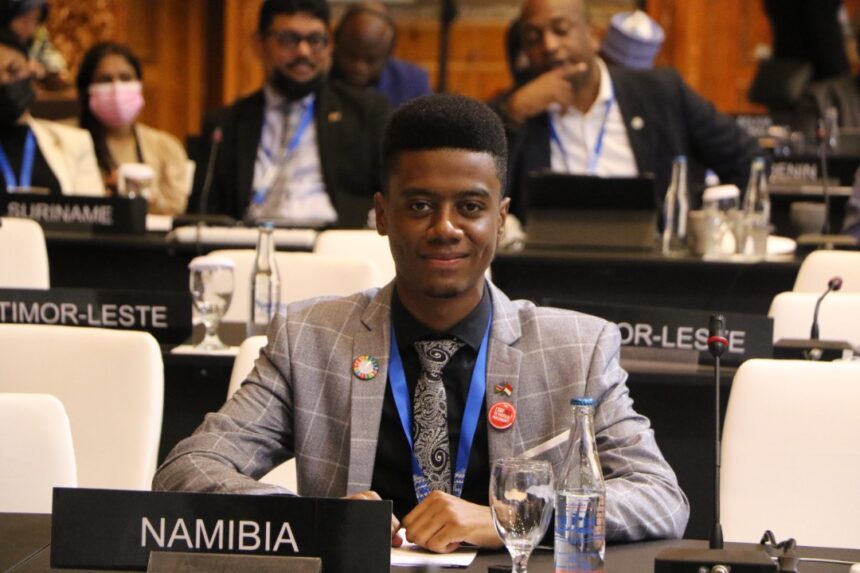Rivaldo Kanongo Kavanga
The prevalence of violence against children in Namibia is horrifying, tragic and on an unabated trajectory despite the country’s laws, policies and institutions that are supposed to protect one of society’s most vulnerable demographic – children.
Reports of children being raped, abused or subject to other forms of violence have grown commonplace in Namibian news.
The horrific news of a nine-year-old orphan being abused and chained at home briefly awakened Namibians to the violence children have been faced with – and although this news was met with frustration on social media, that quickly died out.
Online frustration, alone, will not protect children. Violence against children requires a multifaceted approach from stakeholders tasked with protecting children.
On 29 August 2019, an article was published in The Namibian newspaper, detailing the story of a child who was restrained with chains after allegedly stealing sweets.
As a result, the recent occurrence of a nine-year-old girl being similarly chained by her grandparents is not an isolated incident. Such acts of child abuse call into question the efficacy of laws aimed at safeguarding children, giving the impression that these laws are merely paying lip service, rather than meaningful protections.
A gender-based violence survey conducted in 2019 revealed that about 40% of girls and 50% of boys have experienced some sort of violence in their childhood, and while the reports of violence against minors are finding the day of light, an ample number still go unreported.
Children’s rights
Article 15 of the Constitution of Namibia offers provisions for the safeguarding of children’s rights, while the Child Care and Protection Act places significant emphasis on the aforementioned article by mandating that the best interests of the child must always be upheld.Furthermore, Namibia has also ratified the UN Convention on the Rights of the Child, and while there may be slight differences in the laws, policies and institutions related to child protection, they all share a fundamental goal of safeguarding children’s rights, including their right to be protected from violence and abuse.
The Namibian judiciary, which serves as the legal guardian of children, must act on its duty of care when instances of abuse, rape or other forms of violence against minors are reported.
Deterrence from the judicial system has not proven to be effective because of the overloaded criminal justice system that results in frequently delayed proceedings, and justice delayed is habitually justice denied. The establishment of a children’s court is a notable and significant step in prioritising cases involving children.
However, with all these legal frameworks and institutions in place, cases of rape and abuse of children continue to increase, and no one has answers as to why these incidents are on the increase. The causes of violence against children are polygonal; however, many attribute the cause to being parents who dump children with their grandparents, who are already living in poverty, without any form of financial support, while other causes of violence against children are unhealthy parenting and disciplining methods by grandparents or parents who have experienced trauma.
The rape of children is often attributed to instructions by witch doctors.
Ending the epidemic
To address violence against children, all stakeholders must grit their teeth and confront the social issue hard on them. Prevention, rather than cure, should take primacy in the fight against violence towards children. Primarily, an awareness campaign for grandparents, parents and community members is required to recognise the terrible impacts of violence and abuse on children – and to promote good disciplinary techniques. Communities need to understand that corporal punishment does not add to the masculinity of young boys and that healthy disciplining methods do not reduce masculinity.
Secondly, community-based protection mechanisms need to be developed and strengthened.
Traditional chiefs or village headmen are often predominantly tasked with dealing with issues in their communities.
They need to be sensitised and empowered on how to offer aid, support and act as a safe space for children.
Moreover, we need the justice system in Namibia to prioritise cases of minors that are subjected to violence, abuse or rape. It is imperative that our justice system be relieved of its current burden, and that all cases be addressed promptly – without any undue delay.
To achieve this objective, it is imperative to increase funding allocated to the judiciary. Additionally, the simplification of laws to facilitate comprehension for the average Namibian is essential. It is advisable to encourage Alternative Dispute Resolution (ADR) mechanisms, such as mediation and arbitration, for less complex cases to decrease the number of matters that proceed to trial. Furthermore, the adoption of technology by the justice system is crucial to enhance accessibility and facilitate the administration of justice.
It is imperative for the government to collaborate closely with key stakeholders, including civil society organisations and law firms to enhance the efficacy of the justice system by engineering technology-driven solutions for the judiciary. An example would be an online case management system that provides instantaneous updates on legal proceedings and reduces paperwork.
Lastly, the abuse and violence minors experience do not happen in isolation. It takes place in our homes and communities. We all need to do our part in ensuring that children are safe and that those guilty of violating the rights of children face the law.
*Rivaldo Kanongo Kavanga is a law student at the University of Namibia and was selected as one of the 100 Brightest Young Minds of Africa for 2022. He can be reached at rivaldokavanga22@gmail.com


